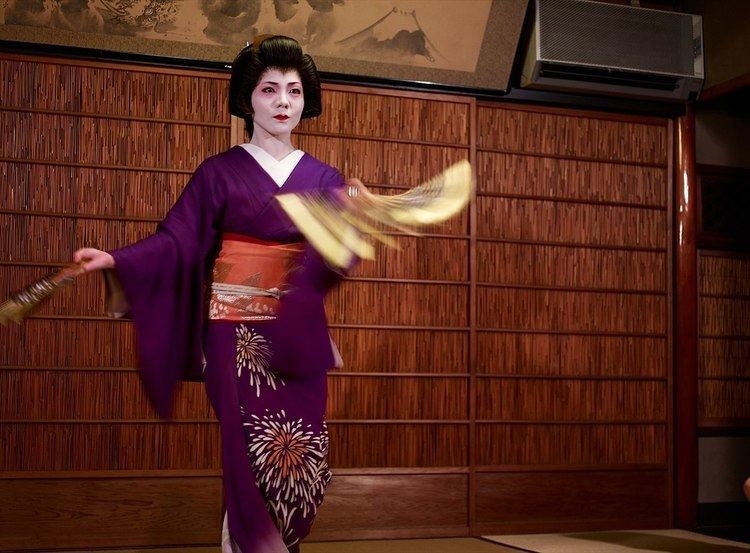 | ||
Buyō (舞踊), or Nichibu (日舞) short for Nihon buyō/Nippon buyō (日本舞踊) meaning Japanese dance, refers to a traditional Japanese performing art that may be a mixture of dance and pantomime. It begins with early dance traditions such as mai and odori, with major development in the early Edo period (early 17th century) in the form of kabuki dances, which incorporated elements from the older dance genres. Nihon buyō differs from other Japanese traditional dances in that it is intended for entertainment on stage. While performed independently by specialists, it is particularly conspicuous as the style of dancing performed by geisha.
Contents
The term buyō however is a modern coinage during the Meiji period as a general term for "dance". The writer Tsubouchi Shōyō is said to have first used the term Nihon buyō. Prior to this, dance was generally referred according to its particular dance genre, such as mai and odori. The term is a combination of mai (舞, which can also be pronounced bu) and odori (踊, can also be pronounced yō).
Influences and components
Nihon buyō is a broad genre of dances that have been refined and improved over four centuries. There are three main elements to Nihon buyō – mai, odori, and furi. Mai is a refined, reserved, and expressive style of dance with few jumps or quick movements; odori is a more energetic dance style, with leaps and lively movements; and furi is the gestures and pantomime movements from kabuki dance.
There are four main parts or influences that are the building blocks of Nihon buyō, the most significant of these being kabuki buyō.
Kabuki buyō
The kabuki dances are based on earlier dance traditions, and have the three principal aspects of mai, odori, and furi, as well as incorporating michiyuki borrowed from bunraku dance scenes. The kabuki buyō started in the early 17th century, grew within the framework of the kabuki theatre and became fully developed in the late 17th through mid 18th century by onnagata.
Noh
The second part of Nihon buyō is noh. Nihon buyō takes a few key elements from noh such as the circular movements and the tools used in its dances.
Folk dances
The third component comes from elements of folk dances. Folk dances are among the earliest of dances in Japan, and they form the basis of many later dance genres. The spinning and jumping movements used in folk dances have become incorporated into Nihon buyō.
Shin Buyō
The last part arose out of influences from European and American culture introduced in the modern era in Japan. The writer Tsubouchi Shōyō, said to be the originator of the term Nihon buyō, proposed changes to kabuki theatre under influence from Western ideas, which was adopted by some kabuki actors, and also led to the development of a new dance form termed shin buyō.
Shin buyō (新舞踊, new dance) began in the early 20th century during the Taishō period when kabuki dancer-actors began to experiment with new approaches to kabuki theatre. Dances on traditional and classical themes may be performed with new choreography, and contemporary popular music may be used to accompany the dance. In the mid 20th century performers, choreographers, non-kabuki dance masters including geishas created experimental shin buyō dance groups.
